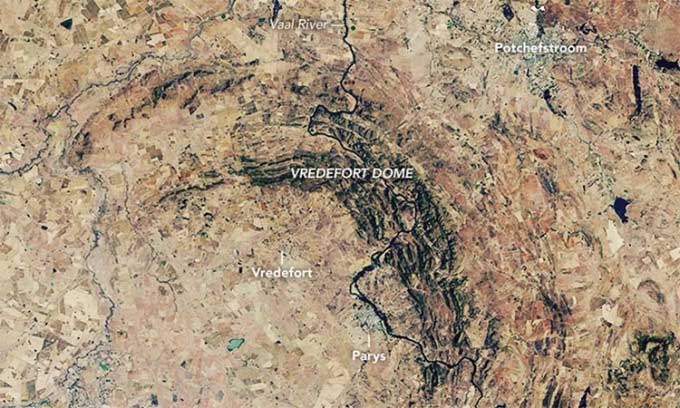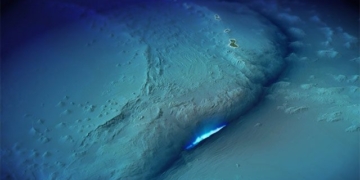2 billion years ago, an asteroid with a diameter of 25 km crashed into Earth, creating a crater 280 km wide and affecting the global climate.
The largest asteroid ever to strike Earth created the massive Vredefort crater near Johannesburg, South Africa, approximately 2 billion years ago, when the planet was inhabited only by single-celled organisms and trees did not yet exist.

Although largely eroded, the Vredefort crater still demonstrates the enormous impact of the asteroid collision 2 billion years ago. (Image: NASA Earth Observatory/Lauren Dauphin/U.S. Geological Survey)
With an estimated size of the crater immediately after the impact being between 250 – 280 km, scientists initially believed the asteroid was about 15 km in diameter. However, research from the University of Rochester indicates that the diameter of this asteroid could be up to 25 km, as reported by IFL Science on September 29. The new study was published in the Journal of Geophysical Research: Planets.
The research team utilized the iSALE physics program to calculate the size needed for the asteroid to create a crater as large as Vredefort. They discovered that the initially estimated diameter would only produce a crater approximately 172 km wide. To achieve the size of 250 – 280 km, the asteroid would need to be significantly larger.
Experts can estimate the impact the Vredefort asteroid had on Earth’s environment based on the Chicxulub impact. A 10 km long asteroid that struck Earth created the Chicxulub crater, wiping out 75% of Earth’s plant and animal species, including the dinosaurs, around 66 million years ago.
There were not many living organisms 2 billion years ago. However, scientists believe that while it did not cause a mass extinction event like Chicxulub, the Vredefort impact had a greater overall effect on global climate.
A large amount of dust disturbed by the impact could have obscured the Sun for hours, even decades. This layer of “sunscreen” would significantly lower Earth’s surface temperature. As the dust settled, CO2 released from the impact would increase the planet’s temperature by several degrees.
Such large impacts during this period help scientists gain further insights into Earth’s geography 2 billion years ago. Additionally, the information gathered aids in studying the effects of other significant planetary impacts and estimating the consequences of future collisions.


















































